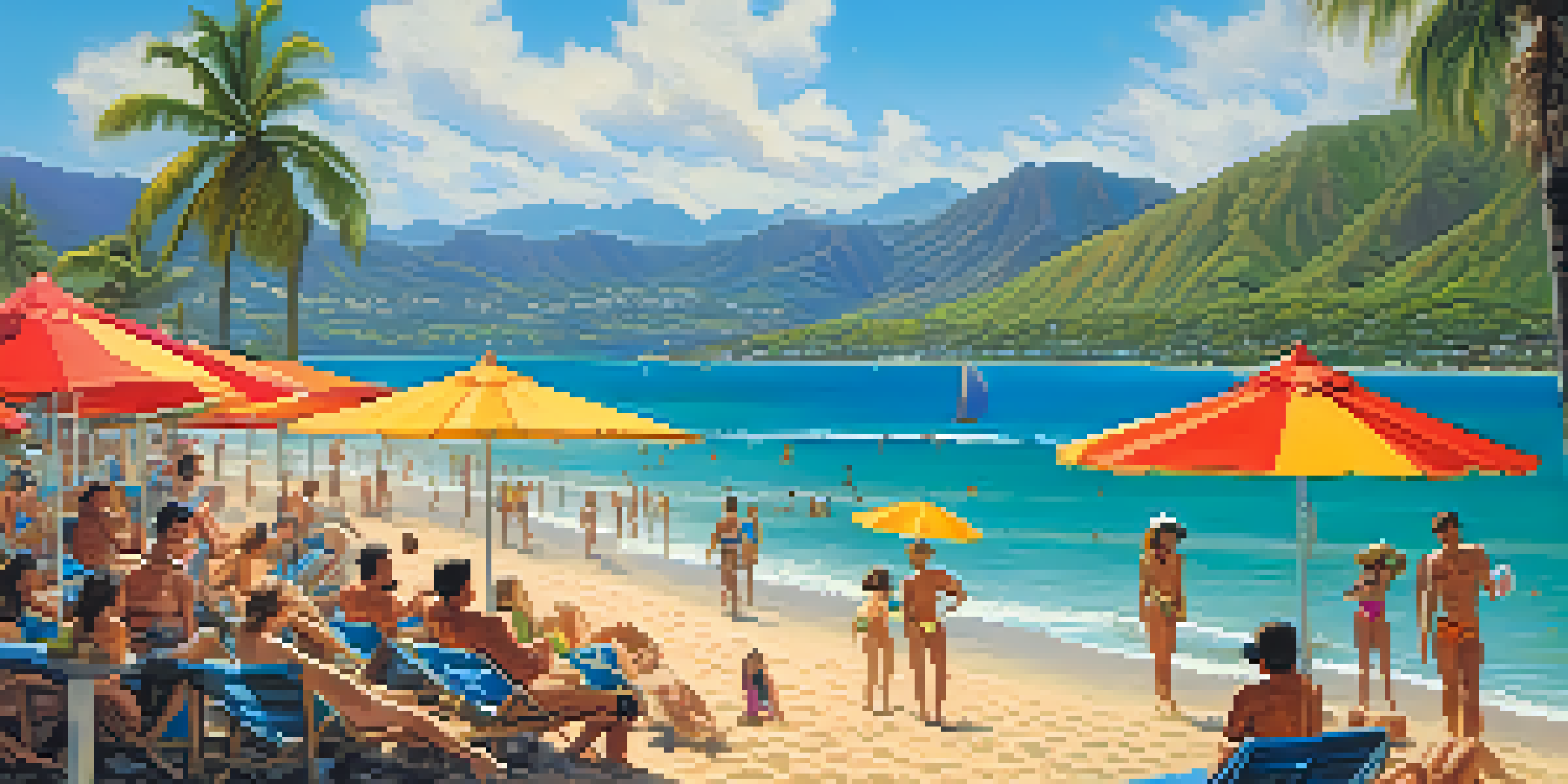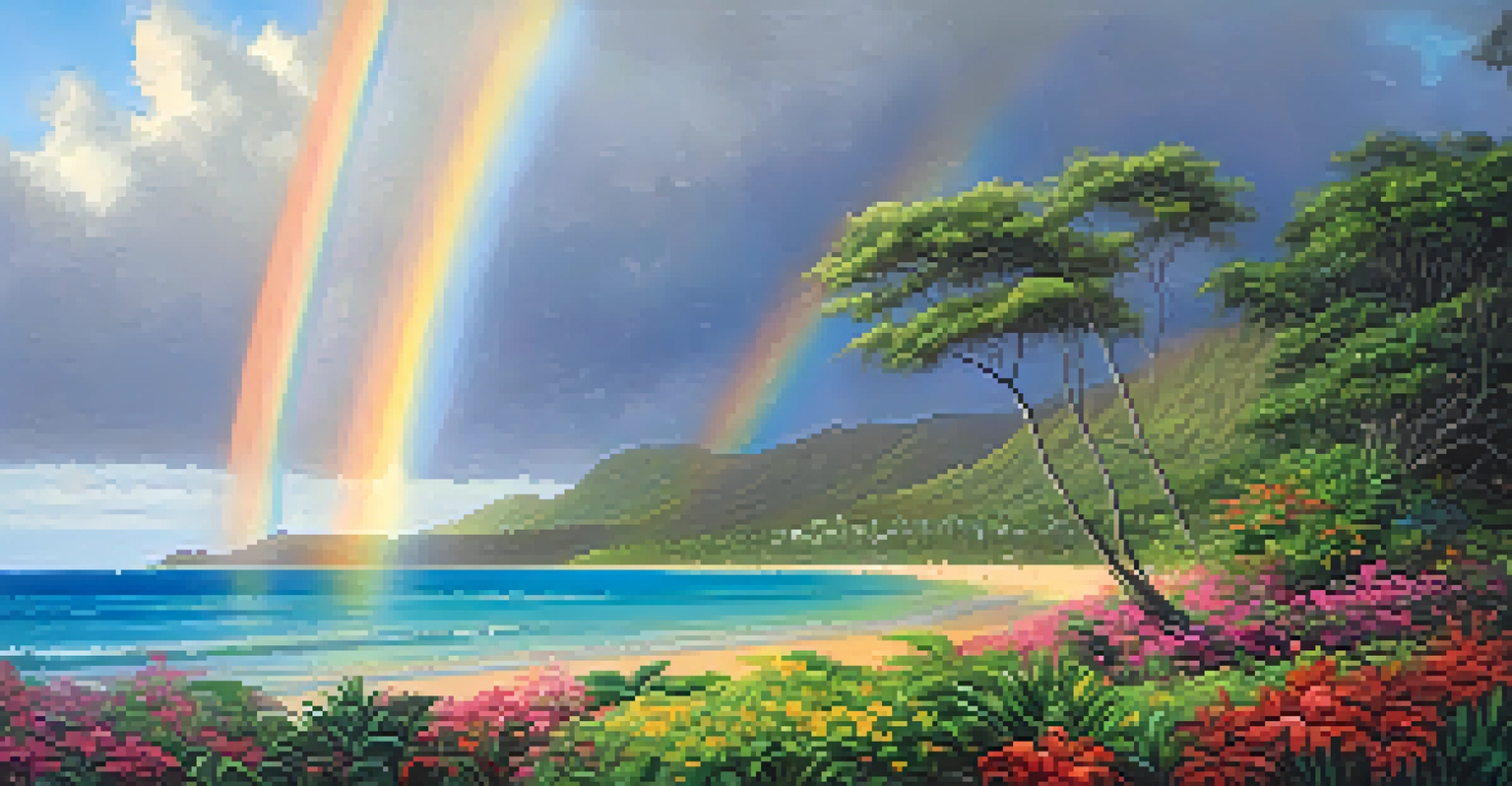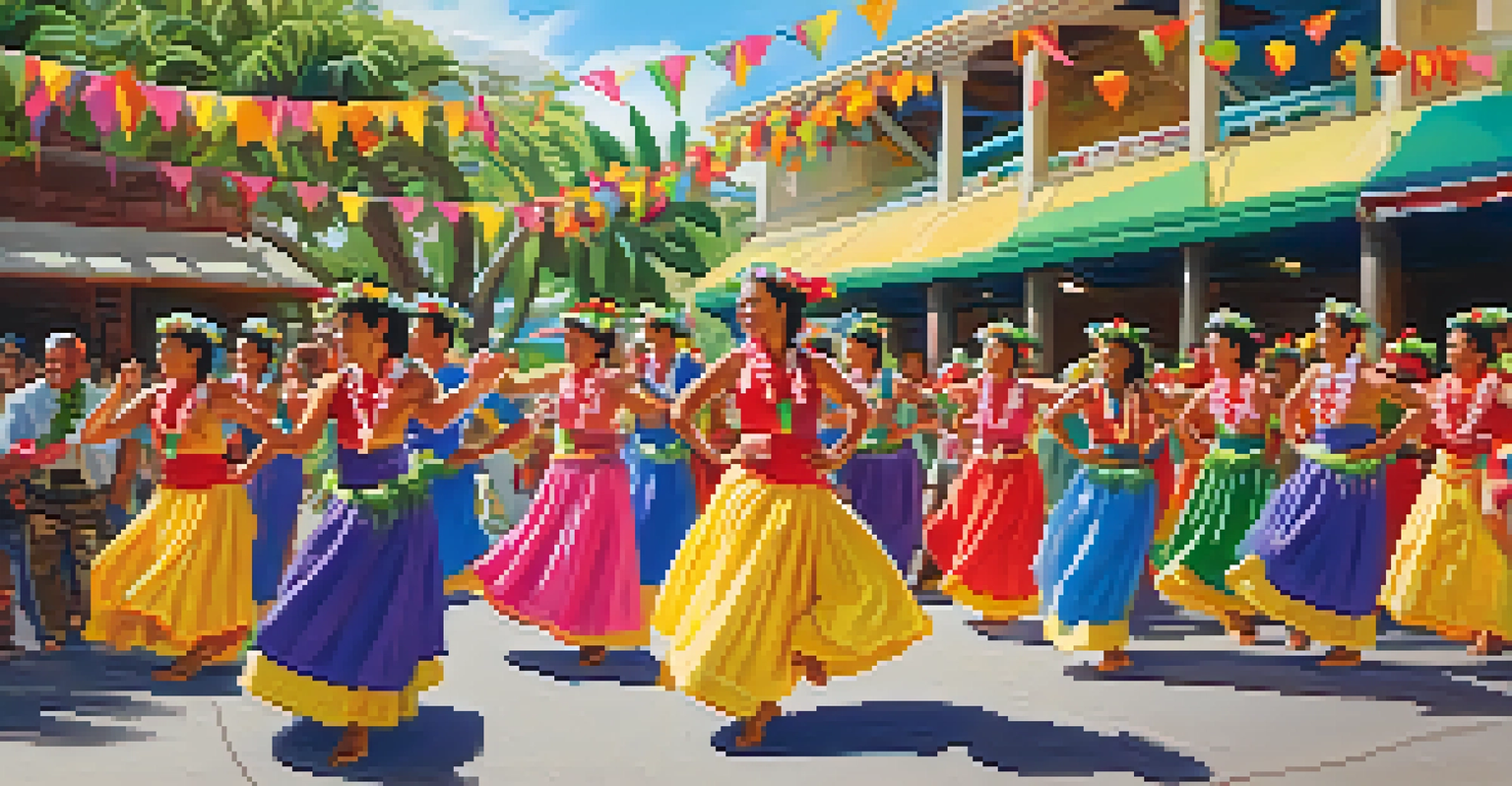Best Times to Visit Honolulu: Seasonal Weather Insights

Understanding Honolulu's Tropical Climate
Honolulu enjoys a tropical climate, which means it's warm and inviting year-round. Temperatures typically range from the mid-70s to mid-80s Fahrenheit, making it a paradise for sun-seekers. However, understanding the seasonal variations can enhance your travel experience significantly. Whether you prefer sunny beach days or cooler evenings, knowing what to expect can help you pack appropriately and plan your activities.
The beautiful thing about Hawaii is that you can be in the middle of the ocean, and you can feel like you're in the middle of the world.
The city experiences two main seasons: dry and wet. The dry season runs from May to October, while the wet season spans from November to April. Each season has its charm, and understanding them can help you decide the best time for your visit. The dry season is particularly popular among tourists, offering plenty of sunshine and opportunities for outdoor adventures.
Despite the wet season bringing more rain, it doesn’t mean constant downpours. Instead, you can expect brief showers followed by sunshine. This unique weather pattern can actually lead to lush landscapes and vibrant rainbows, making for stunning views. So, even during the wet season, you can enjoy the beauty of Honolulu.
Peak Tourist Season: December to March
If you're looking to soak in the vibrant tourism culture of Honolulu, consider visiting during the peak season from December to March. This time attracts visitors from around the world, drawn by the mild temperatures and holiday festivities. The beaches are buzzing with activity, and numerous events celebrate the local culture, including hula performances and traditional luaus.

However, be prepared for larger crowds and higher prices, especially around holidays like Christmas and New Year. Booking accommodations and activities in advance is essential to secure your spot. While the atmosphere is lively, it’s crucial to plan your outings carefully to avoid long lines and wait times.
Best Times to Visit
The peak season from December to March is lively, while shoulder seasons offer fewer crowds and better deals.
Despite the hustle and bustle, many find the vibrant energy during this season captivating. The holiday decorations, combined with the warm weather, create a festive spirit that is hard to resist. If you thrive in a lively environment, this might just be the perfect time for your Hawaiian getaway.
Shoulder Season: April to June and September to November
Shoulder seasons, falling between the peak and off-peak times, offer a sweet spot for travelers seeking a balance of good weather and fewer crowds. From April to June and September to November, you will find fewer tourists, allowing for a more relaxed experience. This period is also ideal for enjoying local attractions without overwhelming crowds.
Traveling - it leaves you speechless, then turns you into a storyteller.
The weather during these months remains pleasant, with warm temperatures and occasional rain. April and May are particularly beautiful, as the landscapes are often still lush from the winter rains. September and October also bring warm ocean waters, ideal for swimming and snorkeling.
Visiting during the shoulder season often means better deals on accommodations and activities. Many hotels and airlines offer promotional rates, so you can enjoy a luxurious stay without breaking the bank. If flexibility is your forte, consider planning your trip during these months for a delightful experience.
Off-Peak Season: July to August
The off-peak season in Honolulu occurs in July and August, which are among the hottest months. If you’re a fan of warm summer days and vibrant sunsets, this could be the ideal time for you. While the heat might be intense, the beaches are still inviting, and the ocean is perfect for water sports.
During these months, you'll notice fewer tourists, allowing for a more intimate experience with the locals and the culture. Many attractions are less crowded, giving you the chance to explore at your own pace. It’s also a wonderful time to engage in local festivals that celebrate Hawaiian culture.
Honolulu's Seasons Explained
Understanding the dry and wet seasons in Honolulu can enhance your travel experience and help you plan your activities.
Keep in mind that while prices may drop, some attractions might have limited hours due to the lower tourist influx. However, this can also mean more personalized service at restaurants and shops. Embrace the slower pace of the off-peak season, and you might find hidden gems that you wouldn't discover during busier times.
Rainy Season: What to Expect
Honolulu's rainy season runs from November to April, with the heaviest rains typically falling in December and January. While this may seem off-putting, it’s essential to note that rain usually comes in short bursts, leaving plenty of time for sunshine. Many travelers are surprised to find that they can still enjoy outdoor activities despite the occasional rain shower.
The rainy season also brings lush greenery and vibrant flowers, painting the island in breathtaking colors. If you’re a fan of photography or simply want to enjoy the natural beauty, this season offers some of the most stunning landscapes. Plus, fewer tourists mean more opportunities to connect with nature and the local culture.
Planning your trip with flexibility allows you to enjoy both sunny and rainy days. Consider indoor activities like visiting museums or local markets on rainy days, and save the beach outings for when the sun shines. Embracing this unpredictable weather can lead to memorable experiences, such as witnessing a rainbow after a brief shower.
Events and Festivals to Consider
Timing your visit to coincide with local events can enhance your experience in Honolulu significantly. From the Honolulu Festival in March to the Aloha Festivals in September, these celebrations showcase the rich culture and traditions of Hawaii. Participating in such festivities allows you to connect with the local community and learn more about their heritage.
Each event features unique activities, including traditional music, dance, and delicious local cuisine. Not only will you enjoy the festivities, but you'll also create lasting memories and perhaps even make new friends. Additionally, these events often feature local artisans, providing the perfect opportunity to pick up unique souvenirs.
Cultural Events Enhance Experience
Timing your visit with local festivals provides a deeper connection to Hawaiian culture and memorable experiences.
Keep an eye on the local calendar when planning your trip, as some festivals may require advance registration. Attending an event can be a highlight of your visit, giving you a deeper appreciation of Hawaiian culture. So, don’t just plan for the weather; plan for the celebrations!
Final Tips for Visiting Honolulu
To make the most of your visit to Honolulu, consider your priorities—whether it’s weather, activities, or budget. Knowing the best times to visit can help you tailor your trip to match your preferences. If you love bustling scenes and festive vibes, aim for the peak season, but if you prefer tranquility, consider the shoulder or off-peak months.
Always check the local weather forecast before your trip, as it can help you pack appropriately. Layering is a great strategy, as temperatures can vary throughout the day. Don’t forget essentials like sunscreen and swim gear, regardless of the season you choose to visit.

Lastly, embrace the local culture and don’t hesitate to ask locals for recommendations. They can provide insights into hidden gems and lesser-known attractions that might enhance your experience. With a little planning and an open mind, your trip to Honolulu can be an unforgettable adventure!